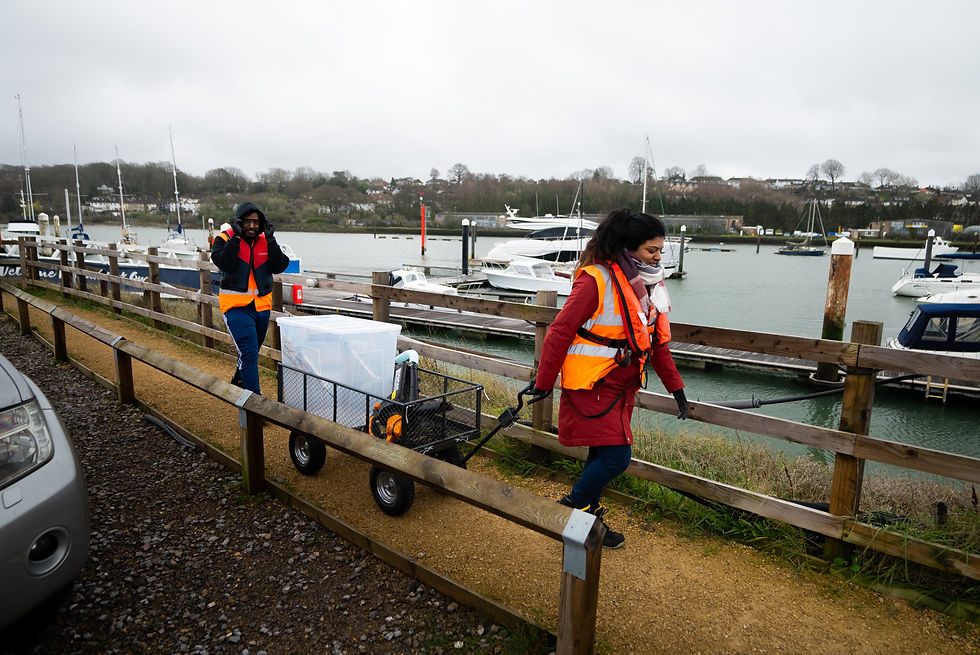Separation tests
- Nurdle GDP
- Nov 27, 2022
- 2 min read
By Sowmi Aravinthan
Parallel to the collection team, the separation team have also been conducting our own tests at the Boldrewood Geomechanics Laboratory.
One of the best methods of separation is sieving. however, there are a number of variables that affect how effective sieving can actually be and this is where our testing comes into play.
We started by testing dry sand mixed with nurdles provided by Oracle Environmental.
The first test we conducted was investigating mesh sizes. Using the standard mesh sizes in the lab (0.6mm, 1.18mm, 2mm, 3.34mm, and 5mm), we filtered through a mixture of 180g of dry sand and 20g of nurdles. We then timed the amount of time taken for the sieve to filter out all the sand particles. This test immediately made it clear that 1.18mm was the best mesh size for dry sand and nurdles as this was the only test where we obtained useable times; for the 0.6 no filtration occurred, for 3.35mm and above, all the material passed through, and for the 2mm mesh some of the nurdles fell through and got caught in the mesh.

Next, we investigated the effectiveness of the 1.18mm mesh when the ratio of nurdles to sand was changed. Keeping the overall mass of 200g constant, we changed the ratio of nurdles to sand in this mass and put the mixture through the 1.18mm mesh. The times for these tests didn't change significantly between different compositions (the biggest variation being 0.53 seconds), suggesting that there is no correlation between the ratio and time taken to filter.
Finally, we investigated how using wet sand would affect the previous results. As expected, this had adverse effects on the sieving time and we found that even after 2 minutes of sieving at the highest amplitude, the sand would not be filtered through the 1.18mm mesh, compared to the 5-6 seconds it had taken with dry sand. However, when flushed through with water, the separation was instant.

Further tests will be conducted to refine our research but the current conclusion is as follows:
A flotation system using water may be best for damp/saturated sand whereas dry sieving is best for dry sand.




Comments